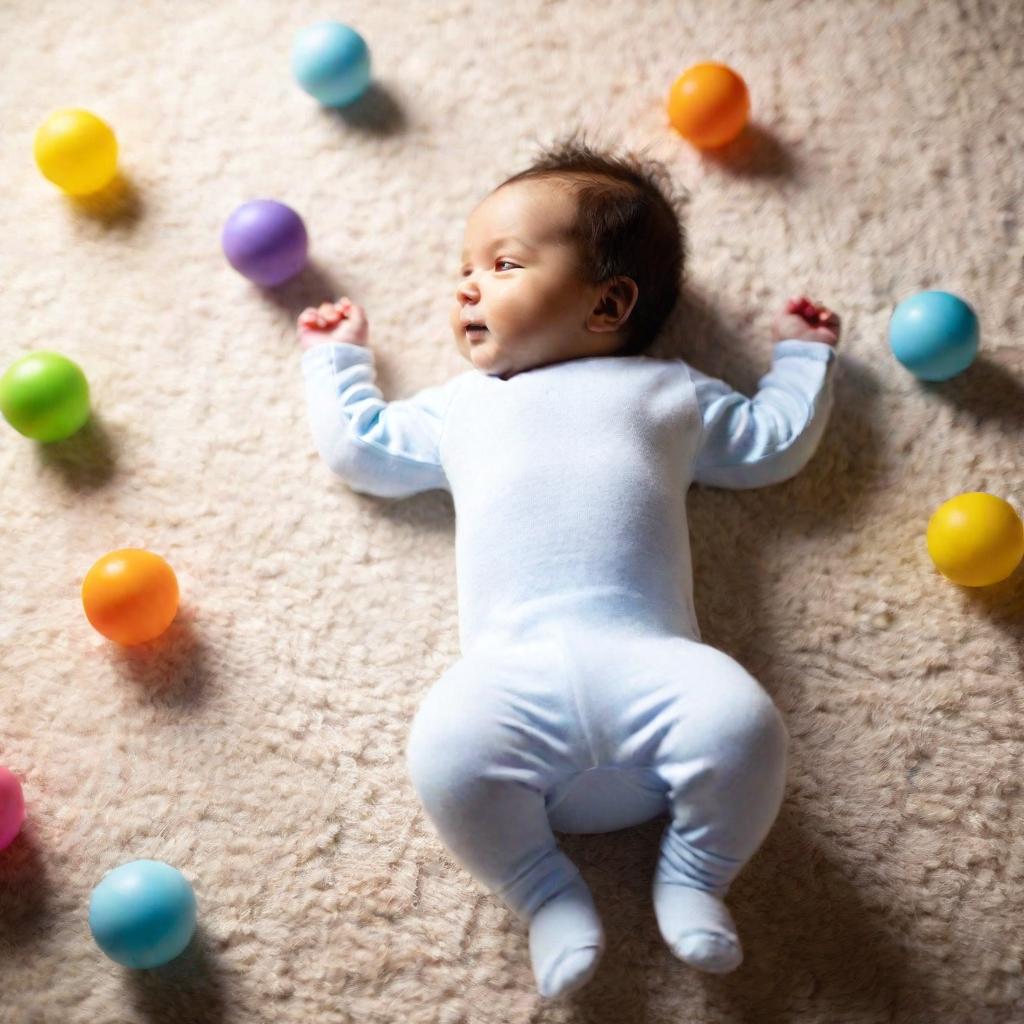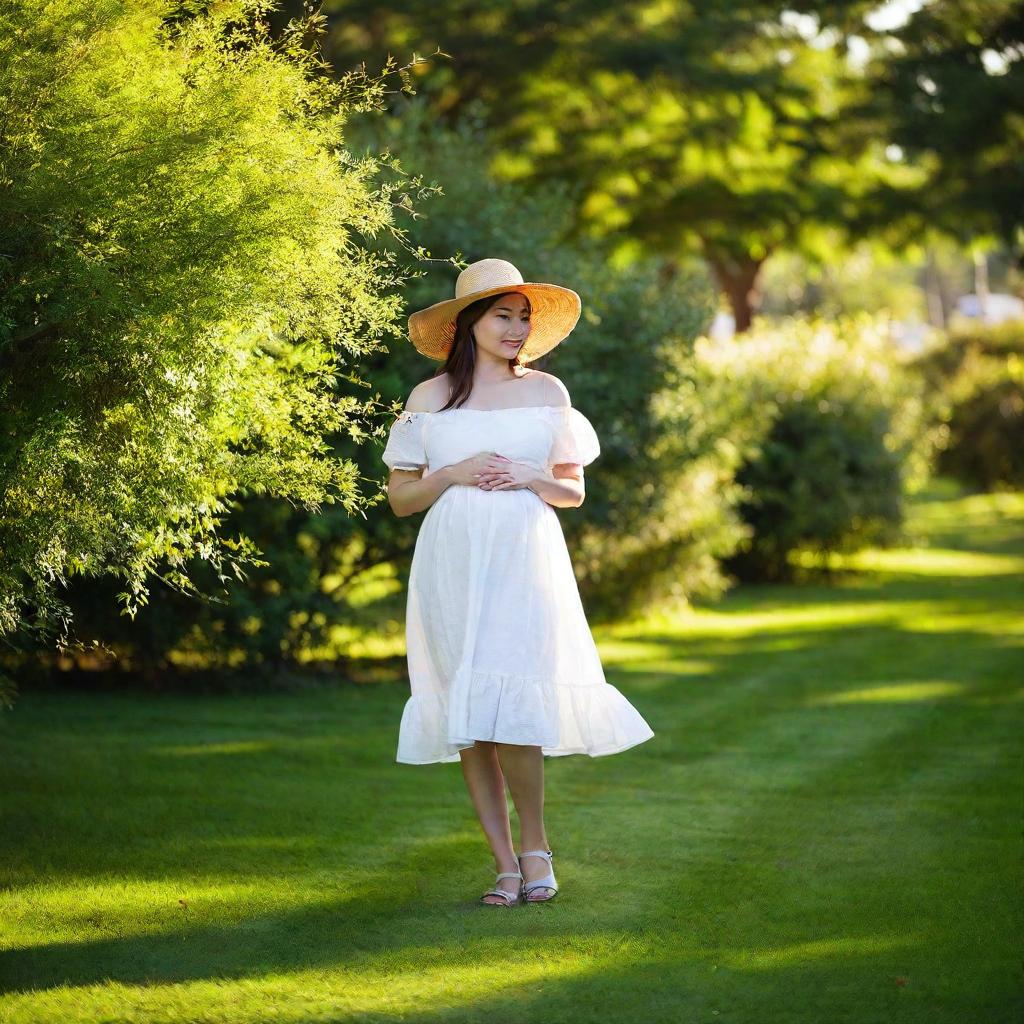Welcoming a new baby into your life is an experience like no other, filled with a rich tapestry of emotions that become even more meaningful when you delve into the important role of sensory play. This playful approach, involving activities that stimulate your baby's senses—touch, smell, taste, sight, and hearing—is both delightful and essential for fostering healthy development.
Engaging your baby in sensory play can unlock a myriad of benefits, nurturing their growth in profound ways. These activities enhance motor skills as your baby coordinates movements, exploring varied textures and shapes with tiny hands. Sensory play is pivotal for cognitive growth by encouraging early problem-solving and critical thinking, feeding into their natural curiosity. This immersion in sensory exploration enriches their learning journey as their brain absorbs new information like a sponge.
Language development naturally flourishes with sensory play. By describing the colors, textures, and sounds your baby experiences, they start to tie words to their surroundings, boosting language acquisition. Listening and responding to your voice during play bolsters communication skills, a cornerstone of early language development.
Beyond technical advantages, sensory play reinforces the emotional bond between you and your baby. These playful experiences build trust and understanding, fostering a warm, loving atmosphere. Whether it's guiding tiny fingers through soft sand or gently whispering as they hear leaves rustle, these activities signal love and security, nurturing a safe, cherished space.
Your involvement is priceless; your touch, voice, and shared laughter provide comfort and reassurance, cultivating a secure attachment. These interactions not only boost your baby's growth but deepen the parent-child bond, enriching your parenting journey with moments of shared joy and discovery.
Incorporating sensory play doesn't mean elaborate setups or expensive materials. Everyday items—a soft fabric, a sound-making household object, a sensory book—can become tools for exploration and fun. These simple activities remind us that big developmental gains can come from the smallest moments, filled with peace and fulfillment.
To truly appreciate sensory play's depth, it's enlightening to explore how each sense contributes to growth and development individually, weaving a developmental tapestry that nurtures your child's curiosity.
The sense of touch opens a world of exploration. As your baby senses textures—the smoothness of water, the grit of sand, the squish of dough—they refine motor skills and hand-eye coordination, laying the groundwork for complex motions and dexterity.
Through sight, your baby deciphers visual stimuli. Engaging with toys and light enhances visual tracking and focus, driving cognitive development as they distinguish colors and shapes, leading to a deeper understanding of the visual world.
The sound of leaves rustling or a drumbeat introduces the auditory world. Engaging hearing develops auditory processing, essential for language learning, teaching sound differentiation, and fostering a love for music.
The often subtle sense of smell establishes emotional connections and memories. Scents like lavender or a favorite toy's smell soothe your baby, aiding emotional regulation. These aromatic adventures encourage curiosity, linking scents to people, places, and experiences.
Experiencing taste introduces flavor joys and supports social-emotional learning. Early exposure to diverse tastes can shape dietary preferences, broadening nutritional variety. Tasting new foods in safe settings teaches about traditions and social interactions, deepening cultural understanding.
Diversity in sensory play is crucial, intertwining multiple senses for a richer experience. A park visit can engage sight with colors, sound with birds, and touch with grass, promoting holistic development and a balanced, enriched environment for thriving exploration.
As you delve into these sensory adventures, remember to follow your baby's lead, gently guiding them and tuning into their cues. This mutual exploration fosters a deep understanding of their evolving world, adjusting experiences to suit individual needs and fostering a supportive embrace.
Incorporating sensory play into your routine can enrich developmental experiences, turning everyday activities into engaging sensory encounters. Here are some simple, satisfying activities:
- Fabric Exploration: Gather varied fabric scraps—cotton, silk, fleece—and let your baby feel different textures. Ensure each piece is clean and free from choking hazards.
- Musical Interaction: Introduce diverse music genres, using household items like pots and wooden spoons as percussion instruments. Keep volume low to protect sensitive ears while expanding auditory mapping.
- Scented Adventures: Allow your baby to smell safe spices like cinnamon or vanilla, avoiding strong or irritant spices for comfort and safety.
Safety is paramount, so here are tips for age-appropriate, secure sensory play:
- Supervised Play: Always supervise to prevent mishaps, ensuring safety and building connection through shared experiences.
- Age-Appropriate Choices: Tailor activities to your baby's developmental stage, starting with simpler textures and sounds, gradually increasing complexity as they grow.
- Allergy Awareness: Monitor for allergic reactions when introducing new scents or textures, especially if your baby has a history of sensitivities.
As your baby grows, modify activities to suit developing tastes and preferences, keeping things fresh and supporting their developmental journey:
- Advanced Textures: Introduce crinkled paper or velvet to maintain tactile interest as they explore textures.
- Music and Movement: Add simple dance moves or rhythmic clapping to respond to music, encouraging beat recognition.
- Flavor Exploration: Introduce different flavors progressively as they begin solid foods, expanding their palate and cultural understanding.
These adaptations create a stimulating, secure environment, nurturing curiosity within a warm, loving cocoon. Let shared sensory experiences guide you in a dance of discovery, where every moment builds a tapestry of growth and connection unique to you.
Incorporating sensory play into everyday routines can transform mundane tasks like bath time or mealtime into engaging sensory journeys. Bathing combines the warmth of water with the sensory delight of splashing, enhancing tactile exploration and bonding. Adding bath toys with different textures enhances fun, while narration adds an audio-visual connection.
Mealtime also offers splendid sensory discovery opportunities. Exploring new flavors and textures helps refine the palate and broaden cultural understanding. Allowing tactile exploration with safe, edible foods turns each bite into a learning adventure, enriched with descriptive discussions.
Creating a sensory-rich home environment can unlock potential. Imagine a nursery with soft colors intriguing visual interest, a gentle mobile, diverse textures, and soft background music—all stimulating your baby's senses and fostering imagination.
Outdoor play merges sensory experiences with physical growth. A park stroll awakens all senses with grass, birds, and leaves, offering a natural, unstructured space for physical capabilities and sensory absorption. Sandboxes become tactile havens, with the wind encouraging auditory focus.
Everyday routines are not just tasks but discovery playgrounds, inspiring and educating through warmth and learning. Whether in bubble play or tasting new foods, each moment builds a developmental foundation infused with love.
By integrating sensory elements into daily life, you nurture an environment brimming with empathy, curiosity, and love. In this dance of discovery, savor shared laughs and moments, creating cherished memory roadmaps.
It's normal to feel hesitant about sensory play due to misconceptions about mess or time. However, embracing playful parenting aligns with your lifestyle. Sensory play doesn't equate to chaos; thoughtful preparation, like washable mats, curbs mess, turning potential chaos into creativity.
Another common myth is that costly toys or elaborate setups are needed, which can be daunting on a budget. Reality is refreshingly simple—everyday objects hold exploration potential without expenses. Items like wooden spoons or rice grains spark engagement without draining finances.
Sensory play can adapt to fit the child's and parents' needs, yielding structured or unstructured options. Structured activities provide routine comfort, such as scheduled tactile or auditory sessions, fostering focused discovery.
Unstructured play offers equal benefits, fluidly adapting to mood shifts. Spontaneous exploration during a stroll adopts natural elements as sensory companions, fostering independence and lifelong learning.
Parents often worry about 'doing enough.' Embrace that no 'right' way exists for sensory play. Every moment—guided or spontaneous—holds unique value, enriching the parent-child bond and seeding confidence and security.
Savor these activities without performance pressure, building joy and learning. Authentic engagement and love are priceless, growing with your child, moment by moment.
Understanding your baby's sensory play responses offers insight into their world. Observing expressions and movements reveals preferences and comfort, adjusting play for curiosity and growth.
Recognizing signs of sensory overload is crucial. Crying, arching back, yawning, or averting gaze signal overwhelm, a cue to pause or shift to calmer activities, nurturing well-being respectfully.
Introduce new activities slowly to prevent overload, balancing stimulation and tranquility. Create a calming space with dim lighting or gentle music for peaceful retreats if play becomes overwhelming.
Adjusting activities with developmental milestones fosters growth and interest. For instance, a newborn reacts differently from a six-month-old, requiring regular activity updates to engage evolving interests.
Your intuition and observation guide these adjustments, providing reassurance and encouragement as they explore their sensory world. Flexibility and attentiveness create golden threads of connection and discovery.
Embedding sensory exploration into your journey, enrich your experience with resources like books and community groups dedicated to early childhood development. 'The Whole-Brain Child' by Daniel J. Siegel and Tina Payne Bryson offers insights into brain development and nurturing through sensory activities. Rebecca Howard's 'Creative Play for 0-2 Year Olds' is teeming with engaging ideas.
Connecting with online communities or local parenting groups offers fresh play ideas and support. Websites like BabyCenter and What to Expect offer expert advice and activities designed for safe, nurturing sensory stimulation.
Engaging with early childhood development experts can tailor activities to match your baby's interests and needs, enhancing development and enjoyment. These professionals deepen understanding, offering strategies catering to curiosity.
Staying informed with the latest sensory development research keeps strategies fresh and effective. Incorporating findings into playtime fosters an enriching environment, supporting thriving development.
Immersing in resources and communities expands playtime options and reinforces support, reminding you—and your baby—that you're not alone.
Embarking on sensory exploration, a shared journey awaits discovery and joy. Observing what captivates your baby becomes mutual learning. These treasured moments create a discovery tapestry, laying future foundations.
By nurturing early curiosity and creativity, you're investing in lifelong skills—imagination and problem-solving become robust frameworks for growth. This enriching environment fosters resilience and adaptability, empowering future challenges as opportunities.
Your role as a parent is substantial, with each interaction adding love and encouragement beyond any toy's capacity. Remember the immense value in every small effort, reinforcing your baby's security and belonging.
Your confidence grows, knowing your role is essential in their growth. Celebrate intuition and adaptability in navigating sensory play, with your involvement leaving an enduring impact.
Create a vibrant, shared growth narrative through wonder and learning, appreciating small victories and discoveries coloring development. Journey on, knowing you're shaping future promise through exploration and affection.


















